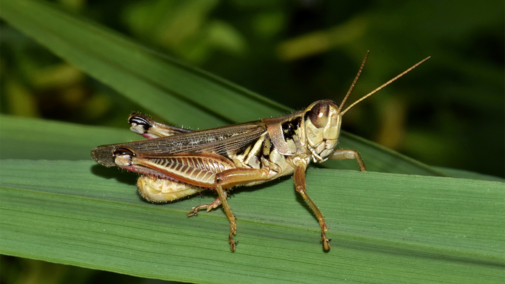Fall Alfalfa Irrigation
Irrigating alfalfa now through November until the soil freezes can protect plants and improve fall yields. However, adjust irrigation rates compared to in-season watering. During the hot growing season, alfalfa water usage may exceed 0.30-inch per day versus fall water usage dropping to 0.10-inch per day. As a perennial plant, alfalfa does not have specific critical growth stages for water stress like most traditional crops. So, when moisture stressed, the plant will slow growth, go dormant, and then resume growth once conditions become favorable again.
The main advantage of fall irrigation is lower evaporation compared to summer; thus, improving irrigation efficiency. Further, most irrigated alfalfa fields never get much water stored below four feet depth, although alfalfa plants can grow roots down eight feet or more. Since roots will not grow through dry soil to reach wet soil, deep soil water storage reserves may be lacking if field soil wetting does not leach below four feet.
To reduce field compaction, pause irrigating two to three days before cutting the alfalfa, and irrigate again when alfalfa regrowth begins. Irrigation scheduling efficiency can be improved by using ET (evaporation and transpiration) measurement gages or soil moisture monitoring.
Review your local NRD irrigation district water usage restrictions; since potential total alfalfa water usage can be over 36 inches per year and may exceed irrigation usage allocations. Conversely, building deep-stored water reserves in the fall can help your alfalfa next summer during rapid growth when it may be difficult to keep up with peak plant water usage demands.
Further, some fields have low water infiltration rates, so irrigating now through November may be the right time for building water reserves. Our UNL NebGuide, “Irrigation Management and Crop Characteristics of Alfalfa” (G1778) provides more details.
Last Alfalfa Cutting
Timing the last fall alfalfa cutting can be a difficult thing to plan for and varies among growers. A balance between stand health, yield and quality must be maintained.
For much of the state, first week of October is the average first killing frost (28°F) for alfalfa, so targeting Sept. 1 as the last alfalfa cutting would allow plants six weeks to store root carbohydrates prior to the killing frost.
This is important as last cutting timing decisions will potentially impact your crop’s winter survival and vigor next spring. For example, in five-cutting irrigated system, research has shown that the next spring first cutting yield will be lowered by approximately the same amount as the yield from a late-fall last cutting.
During dry weather, cutting schedules can be pushed back or more forage may be needed. In these cases, what may be the risk if these producers seek yet another cutting during this growing season?
If the first fall frost occurs earlier than normal, then winter injury is a risk. However, conditions vary from year to year, and plant winterizing generally begins about three weeks before the first frost date with the “ideal” being six weeks of uninterrupted growth in the fall to become well winterized.
Winter survival of later cuttings will improve with younger stands (except new stands), winterhardy varieties and disease-resistant varieties. For those needing extra cash or forage this fall, the higher dairy quality forage values may off-set the financial risk of needing to re-establish alfalfa stands next year which winterkill.
For most producers, the best strategy is to avoid harvesting alfalfa (Sept. 1 to Oct. 15) during the critical fall period six weeks before the first killing frost. This allows plants to enter winter with higher root carbohydrates.
Late Summer Grasshopper Management
As areas of the state begin to dry or continue to suffer from drought conditions, grasshoppers will move into crops from field edges. Alfalfa and grasses seeded late this summer can be especially susceptible to grasshopper feeding damage.
One of the best ways to scout for grasshoppers is to use the square foot method. Randomly select an area several feet away and visualize a one square-foot area around that spot. Walk toward this spot and count the number of grasshoppers you see in or jumping out of this area. Repeat this procedure 18 times and divide the total number of grasshoppers by two. This will give you the number of grasshoppers per square yard. Economic thresholds for grasshoppers range from 8 to 40 grasshoppers per square yard, depending on a variety of factors.
If grasshopper levels have reached threshold, treatment with an insecticide may be feasible as long as pre-harvest intervals are considered. Many insecticides used for other insects in alfalfa and other forages are also labeled for grasshoppers. For current insecticide recommendations for controlling grasshoppers in rangeland, forages, alfalfa, and other crops, please contact your county extension office.
It's also important to remember that our goal isn’t to completely eradicate grasshoppers from our fields, but to reduce their numbers to below threshold levels and give our crops a chance to “win the race” against pests until the first hard freeze of the season.

